| |||||||||||||||||||||||||||||||||||||||||||||||||||||||||||
The Kingdom of Sweden, between 1611 and 1718, was one of the great powers of Europe. In modern historiography the period is known as the Swedish Empire, in Swedish: Stormaktstiden, literally meaning "the era of great power".
Sweden's emergence into a great power
Sweden emerged as a great European power under Axel Oxenstierna and King Gustavus Adolphus. As a result of acquiring territories seized from Russia and the Polish-Lithuanian Commonwealth, but also due to its involvement in the Thirty Years' War, Sweden found itself transformed into the leader of Protestantism.
During the Thirty Years' War, Sweden managed to conquer approximately half of the member states of the Holy Roman Empire. The fortunes of war would shift back and forth several times; after the Battle of Nördlingen the faith for Sweden amongst the Swedish controlled German states was severely injured, and several of the provinces excluded themselves from Swedish power one by one, leaving Sweden with only a couple of northern German provinces. After France had intervened on the same side as Sweden, the fortunes would shift again. As the war continued, it turned more and more grim; and when it was over, it had led to severe depopulation in the German states. Although exact populations estimates do not exist, historians estimate that as many as one third of the people in the Holy Roman Empire may have died as a result of the war.
The Peace of Westphalia
Through the efforts of Axel Oxenstierna and Johan Banér it obtained:
- Swedish Pomerania, the Swedish share of the former Duchy of Pomerania, since the Treaty of Stettin (1653) consisting of
- Western Pomerania, with the islands of Rügen, Usedom and Wollin, as well as the towns of Stettin, Greifswald, and Stralsund;
- a strip of Farther Pomerania on the right side of the Oder, including the towns of Damm and Gollnow, with the right of succession to the rest of Farther Pomerania in the case of the extinction of the Brandenburg Hohenzollerns;
- the town of Wismar with the districts of Pod and Neukloster;
- the secularized bishoprics of Bremen-Verden with the town of Wildeshausen; and
- 5,000,000 Riksdaler.
These German possessions were to be held as fiefs of the Holy Roman Empire. This allowed Sweden a vote in the Imperial Diet and to "direct" the Lower Saxon Circle alternately with Brandenburg. France and Sweden, moreover, became joint guarantors of the treaty with the Holy Roman Emperor, and were entrusted with carrying out its provisions, as enacted by the executive congress of Nuremberg in 1650.
After the peaces of Brömsebro and Westphalia, Sweden was the third largest country in Europe by land area, only surpassed by Russia and Spain. Sweden reached its largest territorial extent during this time under the rule of Charles X Gustav (1622–1660) after the Treaty of Roskilde in 1658.
Dominions
Domestic consolidation
For the moment, Sweden held a tenuous position of leadership. Careful statesmanship might mean permanent dominion on the Baltic shore, but left little room for mistakes. Unfortunately the extravagance of Gustavus Adolphus's two immediate successors, Christina and Charles X Gustav, caused great difficulties for the new empire.
Christina's financial extravagance brought the state to the verge of bankruptcy, and the financial difficulties caused public unrest before her abdication. The Swedish people feared that the external, artificial greatness of their country might be purchased with the loss of their civil and political liberties. The Swedish people looked to a new king to address the problem of too much power vested in the nobility.
Charles X Gustav was a strong arbiter between the people and the nobility. Primarily a soldier, he directed his ambition towards military glory; but he was also an unusually sharp-sighted politician. While placing great emphasis on military strength, he also understood that domestic unity was necessary for a powerful foreign policy.
The most pressing domestic question was the "Reduktion", or restitution of alienated crown lands. At the Riksdag of the Estates of 1655, the king proposed that noble holders of crown property should either: 1) pay an annual sum of 200,000 Riksdaler out of the lands they would receive, or 2) surrender a fourth of the property itself, worth approximately 800,000 Riksdaler. The nobility wished to avoid taxation and stipulated that November 6, 1632, the day of Gustavus Adolphus's death, should be the limit to which retrospective taxes could be collected, and that there should be no further restitution of alienated crown property. Against this, the over-taxed lower estates protested and the Diet had to be suspended. The king intervened; not to quell the commons, as the senate insisted, but to compel the nobility to give way. He proposed a special committee to investigate the matter before the meeting of the next Riksdag, and a proportional contribution should be levied on all classes in the meantime. Both groups accepted this arrangement.
Charles X Gustav had done his best to recover from the financial extravagance of Christina. However, his own desire for military glory may have caused problems for his country. In three days, he persuaded the Swedish estates of the potential of his attack on Poland. However, when he left Stockholm for Warsaw, on July 10, 1654, he gained more personal glory than advantage for his country. The Polish War expanded into a general European war. He achieved passage over the Belts and emerged triumphant, only to die of sheer exhaustion. Immediately after his death, a regency was appointed to govern Sweden during the minority of his only son and successor, Charles XI of Sweden, who was four years old. The regency council moved quickly to end the war with Sweden's numerous enemies, which now included the Russian Empire, Polish-Lithuanian Commonwealth, Electorate of Brandenburg and Denmark-Norway.
The Peace of Oliva
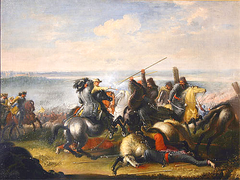
The Peace of Oliva on May 3, 1660 put an end to the long feud with Poland. During the wars Poland lost an estimated 1/3 of its population (referred to in Polish history as The Deluge), and its status as a great power. French mediation of this treaty also ended the quarrel between Sweden and the emperor and the elector of Brandenburg. This treaty confirmed both Sweden's possession of Livonia, and the elector of Brandenburg's sovereignty over Prussia; and the king of Poland renounced all claim to the Swedish crown. The treaty compelled Denmark–Norway to reopen direct negotiations with Sweden. Eventually under the Treaty of Copenhagen, May 27, 1660, Sweden kept the three formerly Danish Scanian provinces and the formerly Norwegian Bohuslän province, which Denmark-Norway had surrendered by the Treaty of Roskilde two years previously. But Sweden had to relinquish the Norwegian province of Trøndelag and the Danish island of Bornholm, which had been surrendered at Roskilde. Denmark–Norway was also compelled to recognize the independence of the dukes of Holstein-Gottorp. The Russo-Swedish War (1656–1658) was terminated by the Treaty of Cardis on July 2, 1661, through which the Tsar surrendered the Baltic provinces to Sweden — Ingria, Estonia and Kexholm.
Thus, Sweden emerged from the war not only a military power, but also one of the largest states of Europe, possessing more than twice as much territory as modern Sweden. The land area of Sweden was 1,100,000 km2. While modern Sweden is bounded by the Baltic, during the 17th century the Baltic formed a bond between various widely dispersed dominions. All the islands in the Baltic, except the Danish group, belonged to Sweden. The estuaries of all the great German rivers lay within Swedish territory, which also included two-thirds of Lake Ladoga and one-half of Lake Peipus. Stockholm, the capital, lay in the very centre of the empire, whose second greatest city was Riga, on the other side of the sea. This empire contained less than a third of the population of modern Sweden — at only 2,500,000 people, or about 5.6 people per square km. However, Sweden's expansion had been possible partly due to turmoil and weakness in surrounding countries, and when they became more stable, they began to look for chances to regain what was lost.
Danish defeat
In 1660, after five years warfare, Sweden had obtained peace and the opportunity to organize and develop the new vast realm. Unfortunately, the fifteen-year regency which followed Charles X Gustav was unable to manoeuvre through the situation it faced. The administration was internally divided and hindered by the lack of unity and talent among its statesmen. The two major rivals were the military-aristocratic party headed by Magnus de la Gardie, and the party of peace and economy led by Johan Gyllenstierna. The aristocratic group prevailed, and brought with it a decline of morality which made it notorious to its neighbours. The administration was noted for sloth and carelessness leading to a general neglect of business. Additionally, government corruption led Sweden to be hired by foreign powers. This "subsidy policy" dates from the Treaty of Fontainebleau of 1661, through which Sweden, in exchange for a considerable sum of money, supported the French candidate for the Polish throne. Sweden was torn between Louis XIV of France and his adversaries in plans to control the Spanish Netherlands. The anti-French faction prevailed; and in April 1668 Sweden acceded to the Triple Alliance, which ended the French acquisitions through the Treaty of Aix-la-Chapelle. For the next four years, Sweden remained true to the Triple Alliance; but, in 1672, Louis XIV succeeded in isolating the Dutch Republic and regaining Sweden as an ally. By the Treaty of Stockholm on April 14, 1672 Sweden entered an agreement with the French to protect it's sphere of interest containing the Dutch Republic from hostile German claims in return for 400,000 Riksdaler per annum in peace and 600,000 in war-time.
The Scanian War
At this point, the empire began to crumble. In 1675, Swedish Pomerania and the Duchy of Bremen were taken by the Brandenburgers, Austrians, and Danes. In December 1677, the elector of Brandenburg captured Stettin. Stralsund fell on October 15, 1678. Greifswald, Sweden's last possession on the continent, was lost on November 5. A defensive alliance with John III of Poland, was rendered inoperative on August 4, 1677 by the annihilation of Sweden's sea-power, the Battle of Öland, June 17, 1676; Battle of Fehmarn, June 1677, and most notable on July 1-July 2 the Battle of Køge Bay. The difficulties concerning the Polish king continued.
Through homeland military successes of the young Swedish king and the diplomatic activity of Louis XIV, a peace congress began its sessions at Nijmegen March 1677; and in the beginning of April 1678 the French king dictated the terms of a peace. One of his chief conditions was the complete restitution of Sweden, as he needed a strong Swedish ally. However, Charles XI refused to go along with ceding territories to its enemies, which led the French king to negotiate on behalf of Sweden without its consent. By the Treaties of Nijmegen, on February 7 and of St. Germain, on June 29, 1679, Sweden received almost full restitution of its German territory. On September 2 by the Peace of Fontainebleau confirmed by the subsequent Peace of Lund, on October 4, 1679, Denmark was to return all the land it had captured to Sweden. While Sweden could never have gained these concessions alone, Charles XI formed a personal dislike of the French king and developed a strong anti-French bias.
Charles XI
The remainder of the reign of Charles XI is remarkable for a revolution, in which the government of Sweden was transformed to a semi-absolute monarchy. The king emerged from the war convinced that if Sweden were to retain its position as a great power it needed to radically reform its whole economic system, and circumscribe the power of the aristocracy. Charles XI felt that he could do it now that he had allies in the lower orders to support him.
The Riksdag of Stockholm, October 1680, began a new era of Swedish history. On the motion of the Estate of Peasants the question of the recovery of the alienated crown lands was brought before the Riksdag, and a resolution of the Diet directed that all countships, baronies, domains, manors and other estates producing an annual rent of more than a certain amount per annum should revert to the Crown. The same Riksdag decided that the king was not bound by any particular constitution, but only by law and statutes, and not even obligated to consult the Privy Council, but was to be regarded as a sovereign lord. The Privy Council changed its official title from Riksråd (council of state) to Kungligt råd (royal council); a visible sign that the councillors were no longer the king's colleagues, but rather his servants.
Thus, Sweden had become an absolute monarchy, but enacted the right of the Swedish people, in parliament, to be consulted on all important matters. The Riksdag, completely overshadowed by the Crown, did little more than register the royal decrees during the reign of Charles XI of Sweden; but, it continued to exist as an essential part of the government. Moreover, this transfer of authority was a voluntary act. The people, knowing the king to be their ally, trusted and cooperated with him. The Riksdag of 1682 declared that the king was empowered to bestow fiefs, and take them back again, making the king the disposer of his subjects' temporal property. Presently, this new principle of autocracy was extended to the king's legislative authority, when on December 9, 1682, all four estates not only confirmed that the king held the legislative powers enjoyed by his predecessors, but even gave him the right of interpreting and amending the common law.
The recovery of the alienated crown lands occupied Charles XI for the rest of his life. He created a commission, which was ultimately converted into a permanent department of state. It acted on the principle that the titles of all private landed estates might be called in question, because at some time or other they must have belonged to the Crown; and the burden of proof of ownership lay with the actual owner of the property, not the Crown. The amount of revenue accruing to the Crown from the whole "Reduktion" is impossible to estimate; but by these means, combined with careful management and rigid economy, Charles XI reduced the national debt by three quarters.
Charles XI re-established on a broader basis the reorganization of the "indelningsverk" — a system of military tenure where national forces were bound to the soil. This tied to the "rust hail tenure", under which the tenants, instead of paying rent, were obliged to equip and maintain a cavalry soldier and horse; while the knekthållare supplied duly equipped foot soldiers. Soldiers were provided with holdings on which they lived in times of peace. Formerly, ordinary conscription had existed alongside this indelning, or distribution system, but it had proved inadequate as well as highly unpopular, and in 1682 Charles XI ended it in favor of an extended distribution system. The Swedish Royal Navy was entirely remodeled; and, the recent war having demonstrated the unsuitability of Stockholm as a naval station, the construction of a new arsenal was begun at Karlskrona. After seventeen years of financial difficulties, the twofold enterprise was completed. At the death of Charles XI Sweden could boast of a fleet of forty-three three-deckers, manned by 11,000 men and armed with 2,648 guns, and one of the finest arsenals in the world.
Charles XII and the Great Northern War
After Charles XI death, the throne was inherited by his underage son, Charles XII. After a brief regency, he was declared to be of age to rule. Three years later, in 1700, Denmark, Poland and Russia, the countries that had lost the most provinces to Sweden, jointly declared war. Denmark was soon forced to peace after a joint intervention of Swedish, English and Dutch armies, whereafter the King and much of the Swedish army was shipped to the Baltic provinces, where Russian and Polish armies were laying siege to several towns. The Russian army was soundly defeated in the Battle of Narva, after which Charles took the army into Poland with the intent of dethroning the Polish king Augustus II. This took several years, but in 1706, with the Treaty of Altranstädt, he reached his goal. In the meantime, Russia had managed to take possession of several towns by the Baltic Sea. Instead of trying to retake these, Charles chose to march directly on Moscow, but due to extreme weather, difficulties with his supply lines and the Russian scorched earth strategy, he was forced to turn towards Ukraine. In 1709, the Swedish army was defeated and captured in the Battle of Poltava; Charles managed to escape south to Bender in the Ottoman Empire. Following the defeat at Poltava, Poland and Denmark reentered the war, along with other countries wanting parts of the Swedish provinces. In the following years, most of them would fall, and Russia occupied the eastern half of Sweden (present-day Finland). Despite these setbacks, Charles XII twice tried to invade Norway to force Denmark-Norway out of the war again. On November 30, 1718, he was shot outside Halden. With his death, Swedish war efforts mostly came to a halt, although Russia continued to harass the civilian population of the Swedish coastal areas until the concluding Treaty of Nystad was finally signed in 1721. Sweden would remain a regional power of varying success until 19th century, but the Great Northern War put an end to Sweden's time as a great power.
Military history
| History of Sweden | |
|---|---|
 This article is part of a series | |
| Scandinavian prehistory (–800) Prehistoric Sweden | |
| Viking and Middle ages (800–1521) | |
| Early Vasa era (1521–1611) | |
| Emerging Great Power (1611–1648) | |
| Swedish Empire (1648–1718) | |
| Age of Liberty (1718–1772) | |
| Absolutism of Gustav III (1772–1809) | |
| Union with Norway (1814–1905) | |
| Oscarian era (late 19th century) | |
| Industrialization (1870s–1930) | |
| World War II (1930s–1945) | |
| Cold war Sweden (1945–1989) | |
| Post–Cold War (1989–) | |
| Military history | |
| Sweden Portal |
A major reason why Sweden could be so successful in wars with such a scarce amount of soldiers was its advanced military tactics. Sweden was able to continuously reform its military tactics throughout the period. Prior to Gustav II Adolf's reforms, both his father Charles IX and his uncle Erik XIV had tried to reform the army but had effectively failed to do so. Charles IX like most other rulers had tried to implement the Dutch system into the army but with limited success. The lack of a strict organisation in the infantry caused the proportion of pikemen to musketeers to be far lower than the preferred ratio of 1 to 1. This, combined with the lack of funds to provide the soldiers with armour, caused the Swedish infantry to be dangerously lightly equipped and unable to deal with cavalry or heavier infantry in open terrain. Charles IX was however able to implement the Dutch system for fighting in caracole among the cavalry, with unfortunate results. His partially reformed army suffered a disastrous defeat at Kircholm against a Polish-Lithuanian army led by Jan Karol Chodkiewicz. The Hussaria were the last shock cavalry in Europe still fighting with lances, yet they proved with terrifying effect the superiority of aggressive charging compared to the more defensive caracole used in the rest of Europe. In the end, Charles IX's revolt against his nephew Sigismund (king of Sweden and Poland, grand duke of Lithuania) and subsequent rise to the throne of Sweden caused a dynastic struggle for the throne of Sweden that would not end until the treaty of Oliva in 1660.
Gustav II Adolf inherited the Polish war together with the Kalmar war against Denmark when Charles IX died in 1611. The war against Denmark was a terrible loss which forced Sweden to pay a ransom of 1 million silverdaler to regain Älvsborg (final payment, 1619). The Polish war was interrupted by a series of truces caused by Sweden's weakness along with the unwillingness of the Polish nobility to fight a war considered to only be in Sigismund III's personal interest. The costly peace with Denmark and Poland-Lithuania's inability to mount a seaborne attack on the Swedish mainland gave time for Gustav II Adolf to reform his armies. The continuation of the Polish war in 1625–1629 gave Gustav II Adolf the opportunity to test and further improve his army against the Polish-Lithuanian army with its fearsome cavalry.
By the time he entered the Thirty Years' War in 1630, Gustav II Adolf had transformed the Swedish (Gustavian) army into an army where the cavalry fought with aggressive shock tactics, closer to the Polish tactics than the Western European. The Caracole and heavy armor were mostly abandoned , and the saber replaced the wheellock pistol as the primary weapon of the cavalry . Horsemen rode knee-by-knee in a tight formation. When in range, they switched to gallop and charged, and at a range of 10 yards shot both their pistols. For a standard regiment that amounted to 250 simultaneous shots which would blast a hole in the enemy ranks. They then continued the charge with sabres (värjor), aiming to break the enemy formation. The infantry was meanwhile employed in a defensive manner, relying on their superior firepower to break enemy attacks. Smaller musketeer detachments (~200 men) were used during the Polish war to support the cavalry against the superior Polish-Lithuanian cavalry. Gustav II Adolf earned the title "father of modern warfare" because of his revolutionary tactics during the Thirty Years' War, which later inspired other nations and became standard tactics. Gustav II Adolf became the foremost model of many later Swedish kings.
Throughout the Thirty Years' War the infantry's shock ability was continuously improved. The static nature of the infantry that served well against the cavalry-dominated Polish-Lithuanian army was enhanced during the war to produce infantry capable of both providing devastating firepower and executing offensive manoeuvers. Initially, at the battle of Breitenfeld (1631) the infantry was almost entirely reliant on their firepower and saw very limited offensive use. But under the leadership of Johan Banér, who took command after the defeat at Nördlingen, the Gustavian brigade system was finally changed into the battalion system recognisable from the War of the Spanish Succession and the Great Nordic War (the depth was lowered from 6 ranks to 3 or 4 when the bayonet was introduced at the end of the 17th century).
Swedish tactics once again greatly diverged from the continental tactics during the second half of the 17th century. The continental tactics increasingly emphasized the firepower of the battalion, while the Swedish (Carolean) tactics almost exclusively relied on the shock factor as the infantry and cavalry charged the enemy. As the bayonet was introduced, the pike was discarded in all armies except the Swedish and Russian by 1700.
In this period, it was said of Charles XII that "he could not retreat, only attack or fall". The same went for his soldiers. In the Swedish army tactics of that time, retreat was never covered, and they were obliged to attack or fight where they stood. This was a military doctrine that (with the advantage of hindsight) might have proven a bit rash.[citation needed]
The infantry shock attack operated as follows. The two rear ranks of musketeers were ordered to shoot when "you could not miss," a range of roughly 50 meters, and then to draw their swords before the battalion resumed their attack. The two foremost ranks then discharged at a range of roughly 20 meters before drawing their swords and the charge began. At this range, the powerful muskets usually felled many enemy troops and was demoralising to them. Directly after the volley the Swedes charged the enemy ranks with pikes, bayonets and sabres. Note that the pikes were used as an offensive weapon: in close combat they had the advantage over their foes' weapons thanks to their range. After the bayonet was introduced in the Carolean army (1700–1706), the final volley was delayed until the soldiers were inside bayonet range.
Every infantry battalion had grenadiers attached. They supported the infantry attack by lobbing grenades from the flanks. They also formed units of their own. They were otherwise equipped like infantry.
Thus, in the latter half of the 17th century, the major difference between the Swedish army and those common on the continent was the relative lack of firepower and the use of pikes and sabres. Sweden and Russia were the only countries at the time using pikes. In contemporary Europe infantry was equipped with a musket while in the Swedish army every third man had a pike. The pikemen where normally deployed 4 men deep with musketeers of equal depth on the sides. The pike was used to repulse cavalry and to break the enemy lines as they charged.
This article is copied from an article on Wikipedia® - the free encyclopedia created and edited by online user community. The text was not checked or edited by anyone on our staff. Although the vast majority of the Wikipedia® encyclopedia articles provide accurate and timely information please do not assume the accuracy of any particular article. This article is distributed under the terms of GNU Free Documentation License.
Thanks to Encyclopedia The Free Dictionary / Farlex, Inc.
http://encyclopedia.thefreedictionary.com/p/Swedish%20Empire
| To Get Uninterrupted Daily Article(s) / Review(s) Updates; Kindly Subscribe To This BlogSpot:- http://ZiaullahKhan.Blogspot.com/ Via "RSS Feed" Or " Email Subscription" Or "Knowledge Center Yahoo Group". | ||
| Amazon Magazine Subscriptions | Amazon Books | Amazon Kindle Store |
| Amazon Everyday Low Prices, Sales, Deals, Bargains, Discounts, Best-Sellers, Gifts, Household Consumer Products | ||
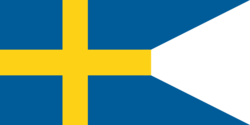

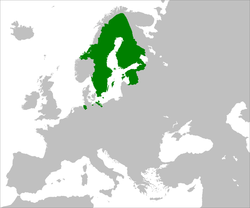


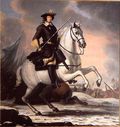
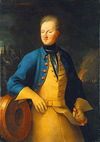

No comments:
Post a Comment